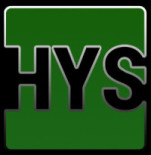Cabinet Construction FAQ
Many of our customers come to us with questions regarding cabinet construction and what makes a “better” cabinet. We thought this would be a good introduction to some basic cabinet construction techniques.
Framed cabinets have a wood frame around the front outer edge of the cabinet box. The face frame is made up of several pieces of wood that are fastened together and then fastened to the cabinet box. The face frame helps to keep the box square and sturdy.
Framed cabinet construction offers style variety based on the amount of door overlay. Door overlay means the extent to which the door covers or “lays-over” the face frame. We use differing overlays depending on the look the customer is trying to achieve.
• Full-overlay: The doors and drawers completely cover the face frame
• Partial-overlay: The doors and drawers cover only part of the frame.
• Inset: The doors and drawers are scribed to fit within the face frame opening.
Frameless cabinet construction is often described as a “European” style of cabinet. Cabinet doors are full-overlay in order to cover the cabinet box. Frameless cabinets tend to be less durable and are typically made to save money.
Beyond framed and frameless design, these are the components that your cabinets will be comprised of.
• Base cabinets are the cabinets mounted on the floor. Kitchen islands are also a form of base cabinet.
• Wall cabinets are mounted on the wall, with no connection to the floor.
• Pantry cabinets are essentially tall base cabinets. They stand on the floor and may be free-standing or attached to other wall and/or base cabinets.
Another part to consider is what materials your cabinets will be made out of. Many people assume cabinets are made out of solid wood. While there are components of your cabinets that will be solid wood, there are many other materials that may go into the construction of your cabinets.
Here’s a list of the materials that might be a part of your cabinet:
• Solid wood
• Particle board – an engineered wood product that’s made from wood chips and particles that are combined with an adhesive and fused together into boards and panels. Particle board makes up a large percentage of the materials used in today’s manufactured cabinetry, from the panels that make up the boxes to shelving. We don’t use any particle board.
• Medium density fiberboard (MDF) – another engineered wood product that’s made up of wood fibers. The fibers are combined with an adhesive under pressure and formed into boards and panels. MDF has a finer texture than particle board and is denser and heavier than particle board. It’s used in cabinet doors, shelves and cabinet boxes.
• Plywood – another engineered wood product that is made up of thin layers of wood that are glued together in a sandwich form. Usually the plies are oriented with their grain direction at varying angles with respect to each other to give the board or panel more rigidity and stability. Plywood is used for shelving, doors and cabinet boxes.
Particle board, MDF, and plywood can all be covered with various finished.
• Birch Plywood- plywood covered with a prefinished birch veneer. We use this as our standard cabinet interior.
• Veneer Covered MDF- MDF sheets covered with wood veneer to match the outside of the cabinet.
• Melamine – a plastic-based product that’s to cover particle board. Many people are familiar with white melamine, but if comes in many different finishes.
• Thermofoil – a thin vinyl film that’s used to cover cabinet boxes, doors and drawer fronts. The vinyl usually starts as a rigid film that’s then heated and formed over MDF panels.
Another thing to pay attention to us the type of joinery used to construct your cabinets. It is important to understand that there is a relationship between the type of construction, quality, durability, and price.
Here are some things to look for:
Dovetail joints – this is the preferred method for drawer boxes. The ends of two solid wood boards are notched with v-shaped cutouts that fit with corresponding notches on the other wood board. These joints are very solid.
Pocket-hole joinery, or pocket-screw joinery, involves drilling a hole at a 15 degree angle into one board, and then joining it to a second board with a self-tapping screw. Joints are also glued for additional durability.
Dado – A groove is cut into a panel that another panel can fit into. This is most often used in a drawer box where the bottom us dadoed into the sides. It’s the preferred way to capture the drawer bottom instead of simply gluing or nailing the bottom.
Rabbet – a notch that is cut into the edge of a board to accept the edge of another board to form a 90-degree angle. It’s similar to a dado, but one side is left open.
Simply stated, good cabinet construction methods use joinery techniques where the parts lock together or where one piece is captured in the other because it makes for the strongest joints. Stronger joints mean more durable cabinets.


Leave a Reply
You must be logged in to post a comment.